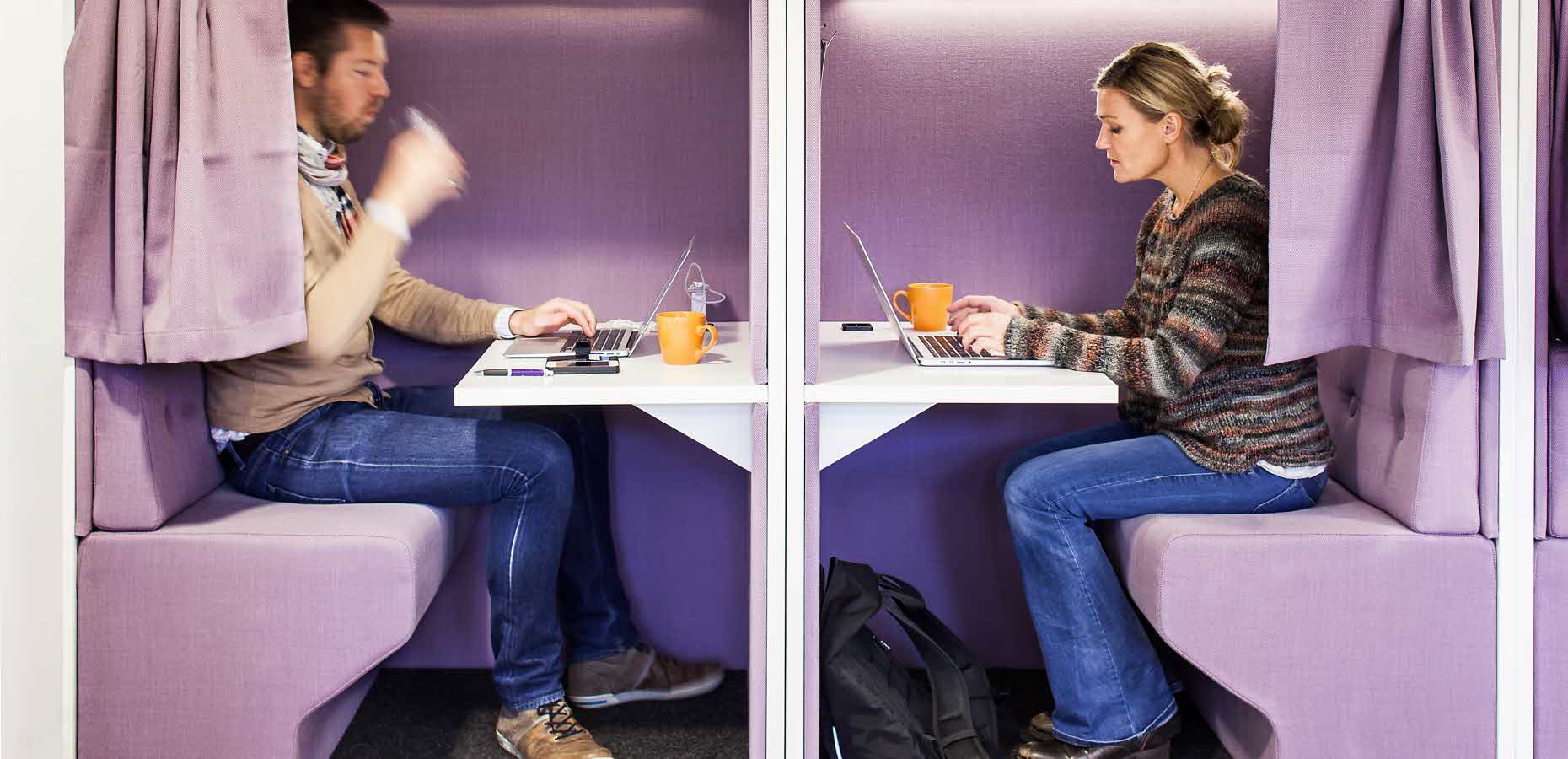Offices feed creativity
So, with today’s technology combined with the hunt for a peaceful work environment, some people are asking themselves, “Do we even need an office?”
“We’ll always need offices because people are at their most innovative and creative when they’re able to meet with each other and exchange ideas,” says Anna-Lena Carlstedt, Business Developer at Fabege. But it is important to carefully consider how the office should be designed to support all the tasks carried out during the course of a day.
The activity-based office – working where the brain is
Emailing, writing, reading, talking and discussing are things that most of us do in a single location: at our desks. No wonder we lose concentration on a regular basis.
“An activity-based approach allows you to work where your brain is, so to speak, rather than where the desk is standing,” says Anna-Lena Carlstedt. “Your tasks govern where you work.”
Greater well-being
Creative brainstorming meetings, silent concentration, telephone calls and chatting with your project team are some examples of activities that are best carried out in vastly different settings.
“Most people who have switched to activity-based working also experience greater well-being, creativity and knowledge exchange because they encounter their colleagues more often and in several different situations,” says Anna-Lena Carlstedt.
A quiet corner
“Studies show that collaboration between people is increasing, which means that we also need time for reflection. The more we work together, the more quiet rooms and silent zones we need,” she continues. A quiet room doesn’t always need to mean four walls and a door; it may just as well mean a quiet corner with soft lighting, or an armchair to sink into that screens you off from the world.



